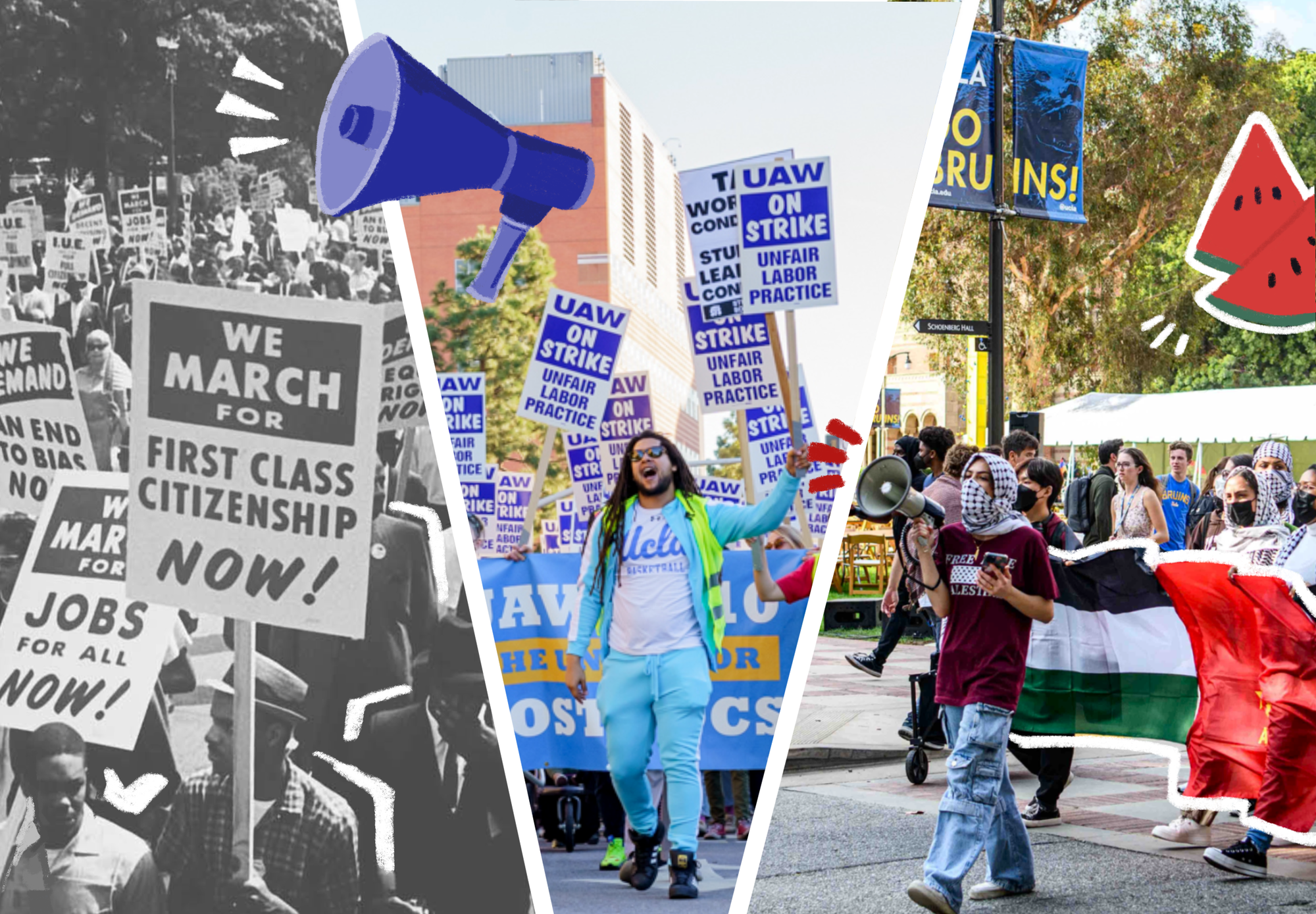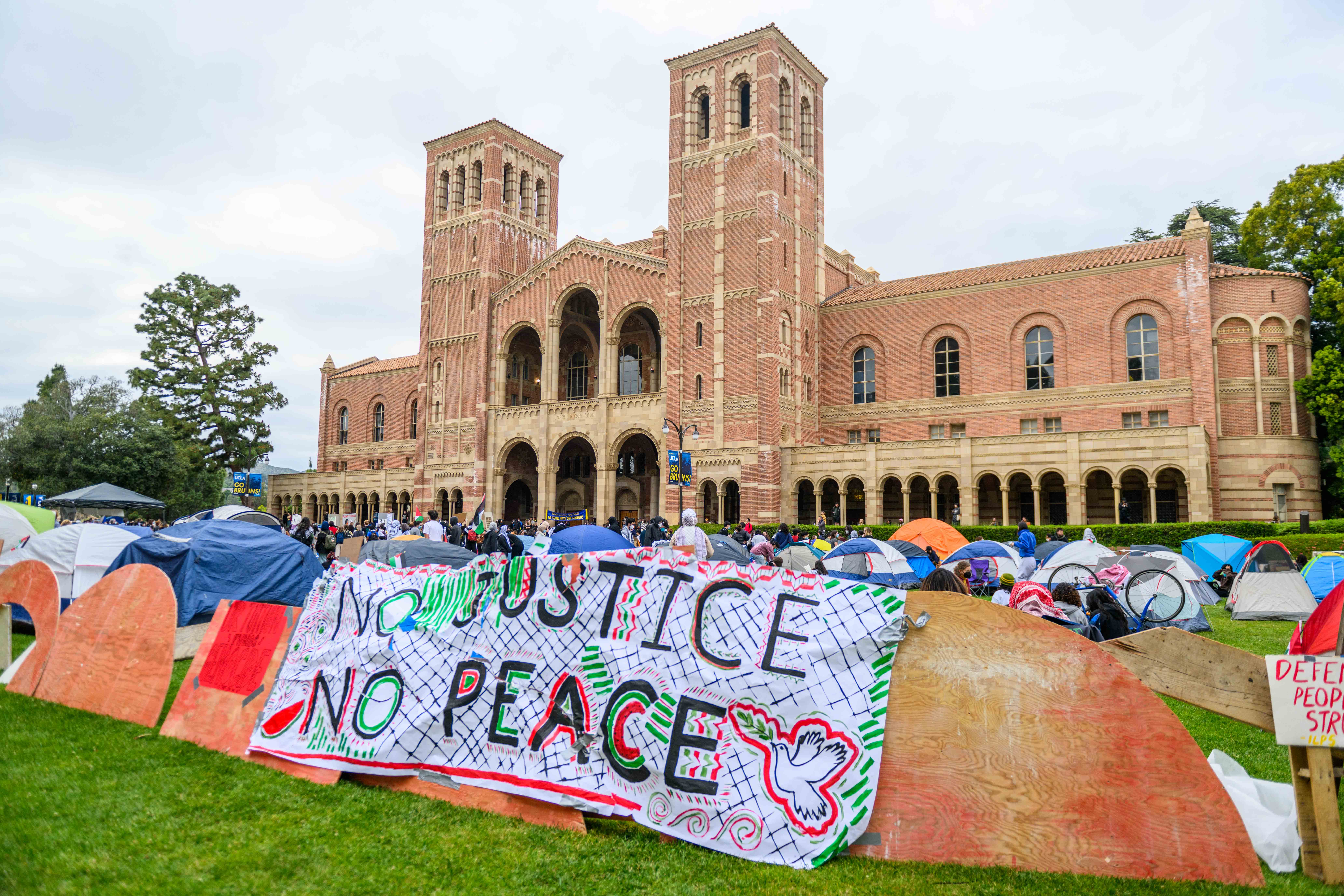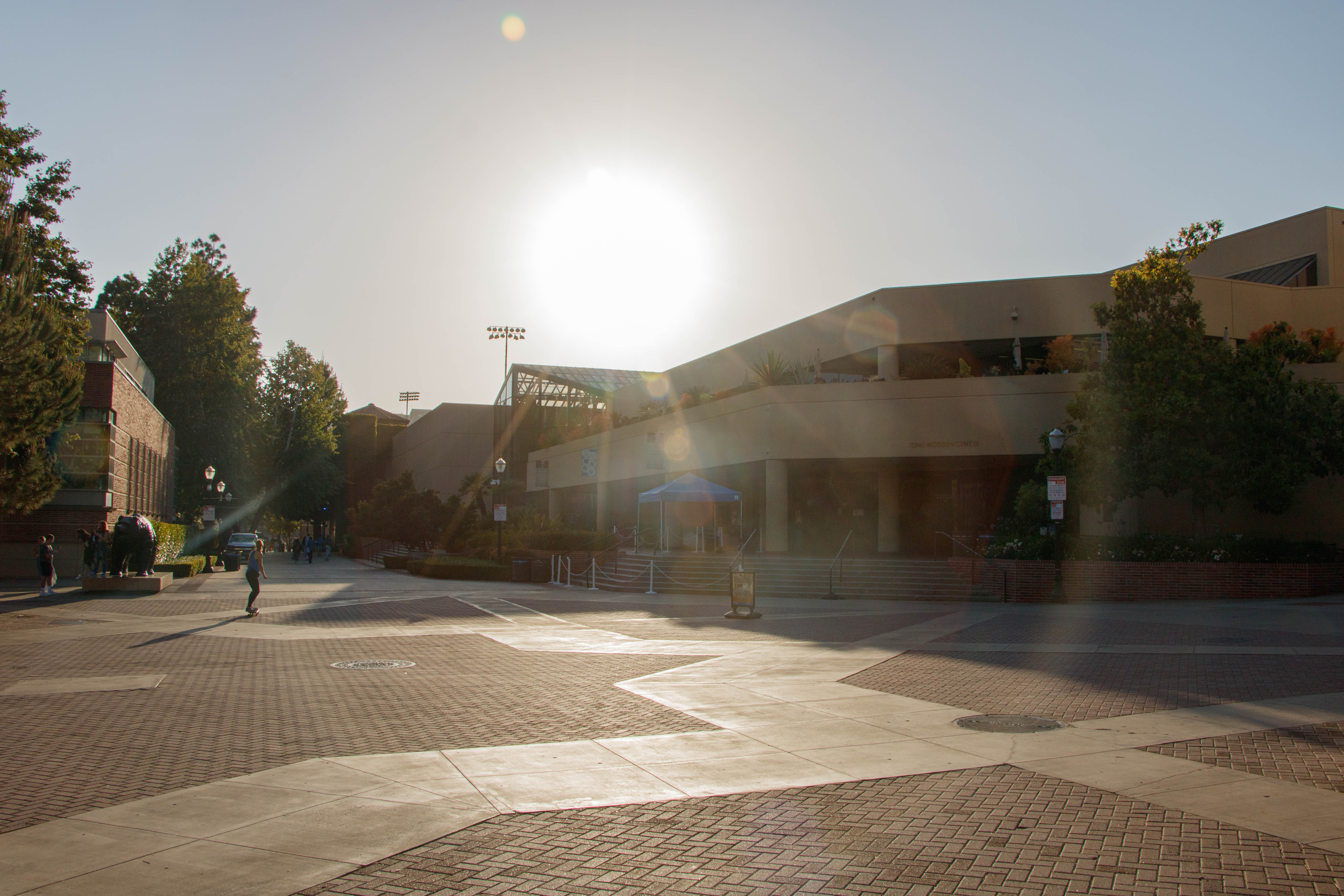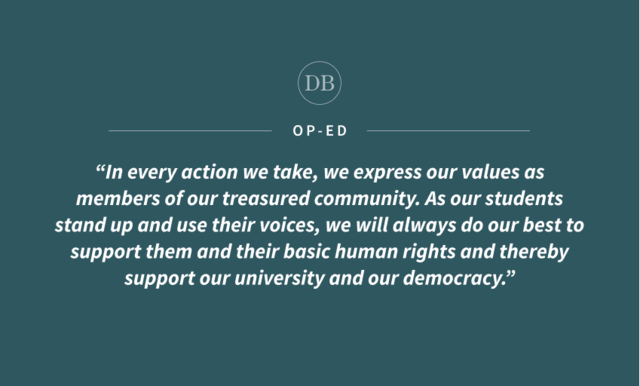‘Raising important questions’: UCLA’s long history of student activism, protests

Historical and current protests at UCLA are pictured. UCLA’s recent encampment demanding divestment from the Israeli military embodies the fervor and widespread participation reminiscent of past protests on campus. (from left to right) (Courtesy of NARA, Brandon Morquecho/Daily Bruin senior staff. Photo illustration by Joy Chen/Daily Bruin staff)
By Riya Abiram
June 10, 2024 12:08 a.m.
Protests expressing solidarity with the people of Palestine have stirred the Bruin community and beyond as the school year comes to an end.
Resulting in over 200 arrests and 25 hospitalizations, recent activism on campus has put UCLA under the national spotlight. Activism has long been integral to the fabric of the university, allowing for students to advocate for the pursuit of a more just society, said sociology professor Rebecca Emigh. She added that activism on college campuses is crucial for a strong university education.
“We should be teaching about the real world,” Emigh said. “There should be an open dialogue about real world issues, and people should be engaged in debate about that.”
The first documented form of student activism at UCLA occurred in 1934 when John Burnside, Tom Lambert, Mendel Lieberman, Sidney Zsagri and Celeste Strack were suspended by then-Provost Ernest Moore. According to a statement obtained from Moore in 1934, the suspended students had allegedly been working with the National Student League, a communist organization that had planned to partake in revolutionary activities amid growing fear of revolutionary activity occurring at UCLA.
In response, both UC Berkeley and Stanford University’s student newspapers commented on these suspensions, with an editorial from The Daily Californian questioning the intended effect of the suspensions.
Shortly after, then-Stanford student Stan Beaubaire began a petition to reinstate the suspended individuals. The circulation of the petition across UCLA and other California universities culminated in a 3,000-person protest at Royce Quad. Administration soon initiated hearings for each student, during which all suspensions were lifted.
Decades later, national student activist group Students for a Democratic Society rose to prominence in response to President John F. Kennedy’s escalation of the war in Vietnam and socioeconomic inequalities across the nation. Their protests in the 1960s, which were often met with police brutality, sparked debates on the nature and implications of the First Amendment.
Throughout history, the tension between the right to petition and ensuring community safety has been a persistent dilemma. Michael Meranze, a professor of United States intellectual and legal history, said this balance continues to be a complex and unresolved discussion.
“Campuses are required to enforce their rules in what’s known as a content-neutral way,” Meranze said. “But I think the question is, … what are reasonable restrictions?”
Debates on First Amendment rights gained prominence as protests and civil unrest intensified.
On May 19, 1969, visiting student James Rector died from police violence at UC Berkeley during a protest against the destruction of People’s Park, a park dedicated to the student activism of the time. This militarization of police forces sparked protests across the UC system, including UCLA.
At UCLA, about 1,200 students occupied multiple floors in Murphy Hall.
A few months later, protests against the Vietnam War intensified at UCLA and across the nation after the death of a student protester at the hands of the police at Kent State University. As students threw rocks, committed vandalism and set fires in Ackerman Union, police forcefully intervened.
In 1985, UCLA students gathered to protest against a new cause: apartheid in South Africa. Students demanded the UC system to divest its $2.3 billion investment in companies supporting apartheid. Around 2,000 protesters rallied together for the cause, and nearly 750 students set up encampments and chanted in Murphy Hall.
As a result of the demonstrations, the UC system enacted a new policy to divest on July 18, 1986.
Student activists on campus have set the tone for contemporary movements. While social media and other modern tools have offered activists new avenues to advance their causes, current-day demonstrations, such as UCLA’s recent encampment demanding divestment from Israel, embody the fervor and widespread participation reminiscent of past protests, while also facing similar challenges of violence and mass arrests.
Jasmine Lu, a first-year physics student, said that she and many others experienced extreme violence while at the encampment and that calls for help from the police and administration were futile.
“A lot of the people around us, and myself included, were screaming at these three rows of, I’m pretty sure it was UCPD, just standing on the sidelines watching it happen,” Lu said. “We were screaming, ‘Help us, do your job,’ and they just continued standing there. And at one point even, one of them was smiling and laughing, and they had their phone out, recording, as if it was something funny to them.”
Meranze said measures to suppress and terminate campus protests have and will continue to exist.
“Generally, when students protest, at least initially, it’s not very popular. People get upset,” Meranze said. “They were upset with the movement against the (Vietnam) war, they were upset initially about divestment in South Africa, and that’s what’s going to continue to happen.”
Despite the perpetuation of resistance against student protests, Meranze said students should continue to stand up for what they believe in because of the impact it can have on society.
“I think that there’s no question that students have had important and very positive roles in raising important questions that oftentimes universities and certainly the larger society did not want.”




